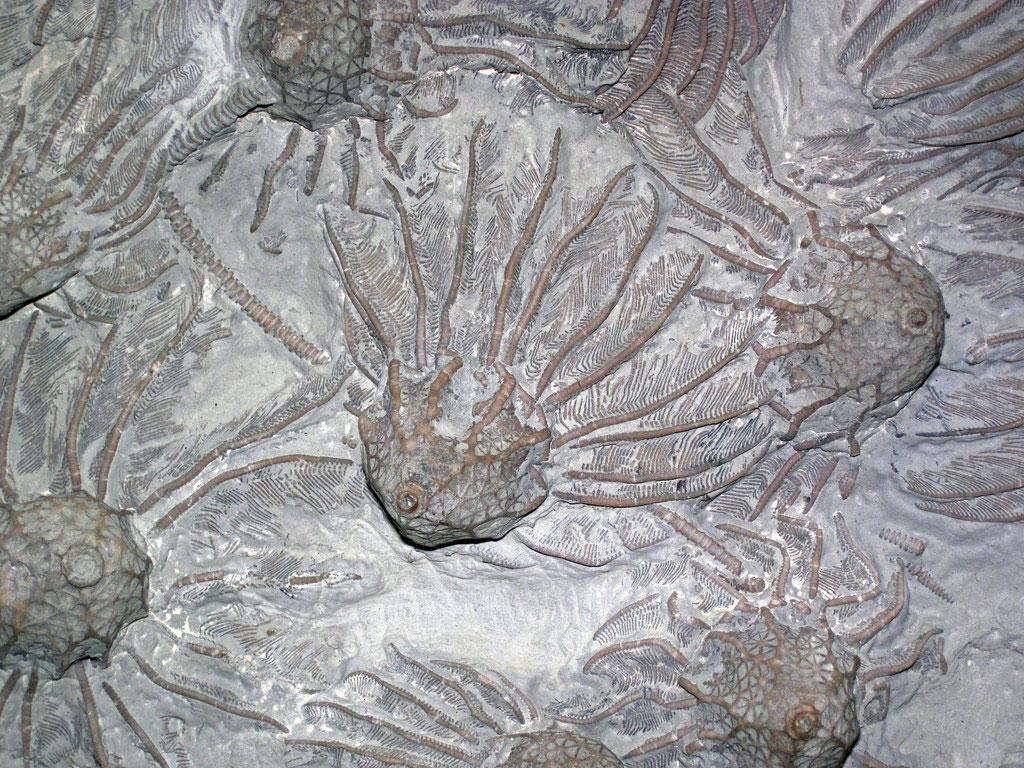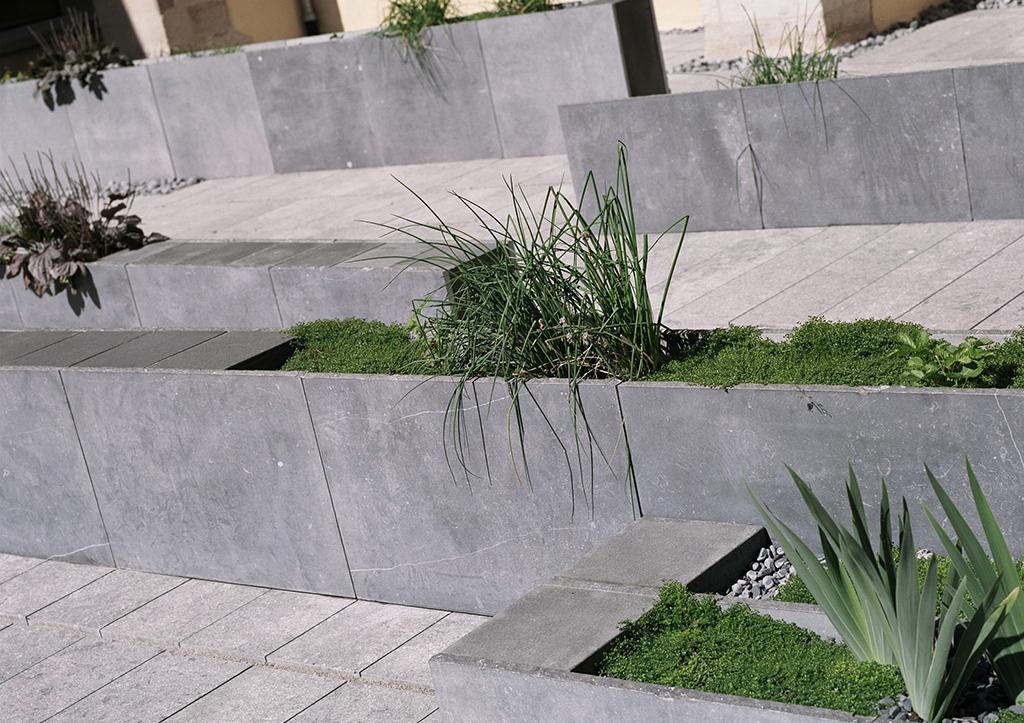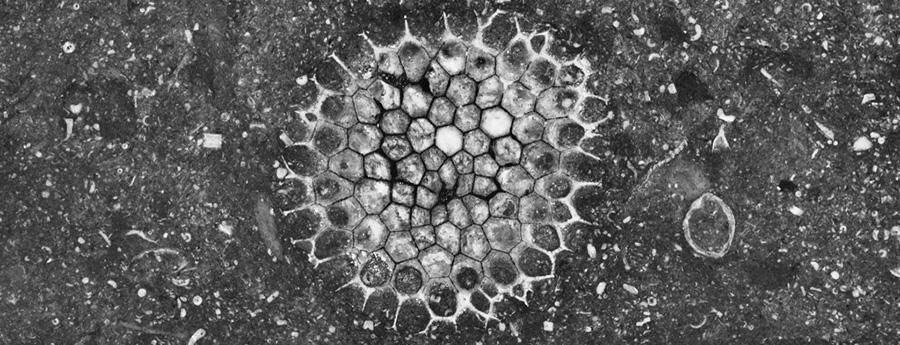
During our MeetUp 2019 (the event outside the Marmomac fair 2019), we have exhibited enlarged photographs with motifs that looked like honeycombs or manmade geometric shapes. These photos captured a lot of curiosity among our visitors, so it’s high time to reveal that on the photos you can see branched sections of once really beautiful corals, embedded in the natural stone Pierre Blue!
Origin and physical properties of Pierre Blue
The name Pierre Blue, or Pierre Bleu (also called Belgian Bluestone or Blue Stone Marble) derives from its special colour: grey that tends to shades of blue that go from black to very light white, depending on the processing of the surface. Like all natural stones, the essential and different characteristics of Pierre Bleu lead to interesting and fascinating contrasts on the slab surface.
The mining area is primarily located in Belgium, near Liège – hence the French name!
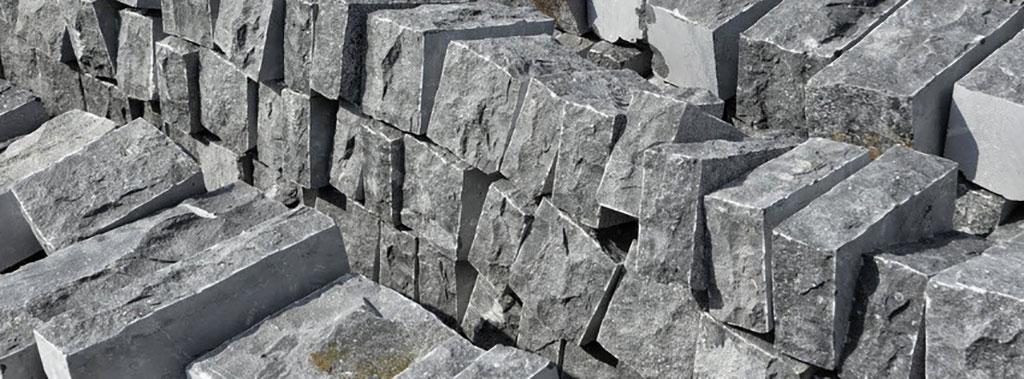
Although Pierre Bleu shows some technical characteristics of marble, it is not a marble, because it is not originated by metamorphosis. Pierre Bleu is a sedimentary rock, formed of calcareous mud, its grey-blue colour is interspersed with shell fossils and other marine organisms, such as Crinoidea, the so-called sea lily…
Pierre Bleu is a hard, solid and heavy stone, as compact as marble; due to deterioration, the surface becomes shiny and gets a very special look, depending much on the utilization. The colour variation is considerable and mainly caused by the moisture contained in the surface. Even though the surface is not porous, Pierre Bleu takes on a darker colour when getting wet. Advantageously, this material dries very quickly and is therefore moisture-resistant and frost-proof. It is also resistant to weather, dirt and pollution.
Use of Pierre Bleu stone
One of the first historical applications of Pierre Bleu can be found in the carved, Romanesque baptismal font in Tournai in France, but it was also used in England (where you’ll find blue-coloured medieval baptismal figures in many churches). Later, many floors of churches (blue stone was used like black marble) and tomb stones were made of this natural stone.
Since the 17th century, Pierre Bleu has been extracted on an industrial scale and the natural stone and its product have decisively contributed to the prosperity of Tournai. Pierre Bleu is both building and ornamental stone and actually, it is one of the most commonly used stones for traditional buildings in the Walloon region of Belgium.
From the Middle Age to the recent past, Pierre Bleu was especially applied as foundation stone, structural element and wall brick (often in combination with red bricks or yellow tuff stones), as the solidity and resistance of this natural stone are of great advantage in construction.
In recent times, Pierre Bleu is frequently used for floors, both out-doors and indoors: it perfectly fits for decoration, flooring, wall covering, worktops, kitchen tops or washing table tops. Special sinks or shower trays can also be created. Technically, Pierre Bleu can be used in any living space.
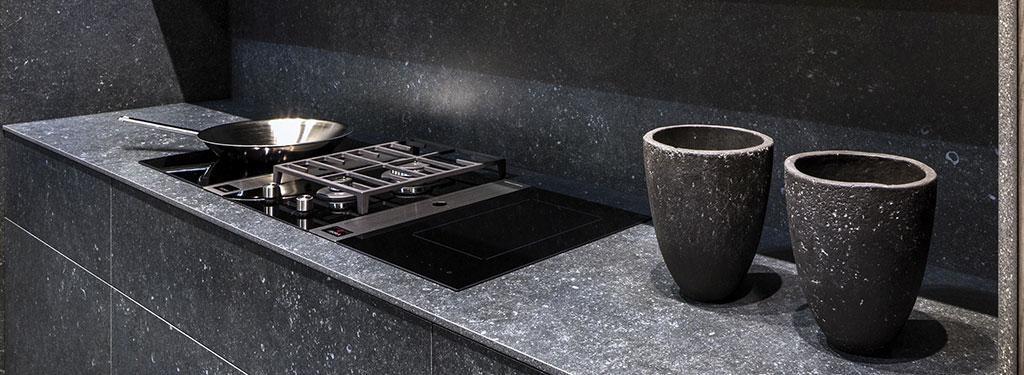
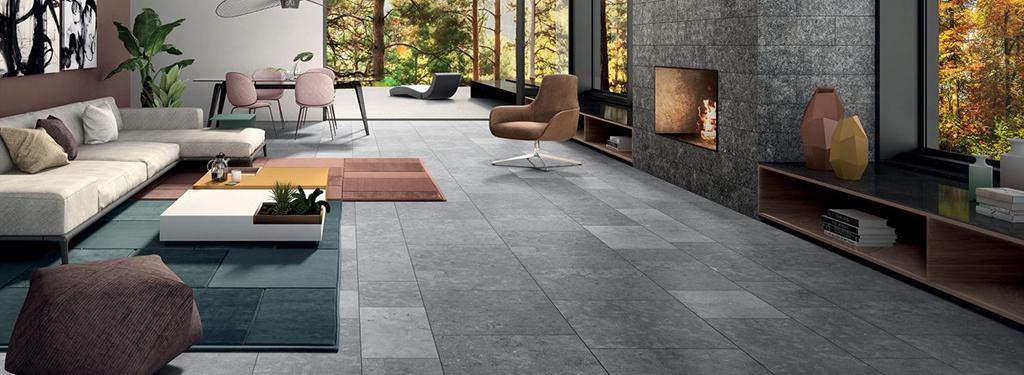
Have a look at Pierre Blue sheet in our catalogue.

